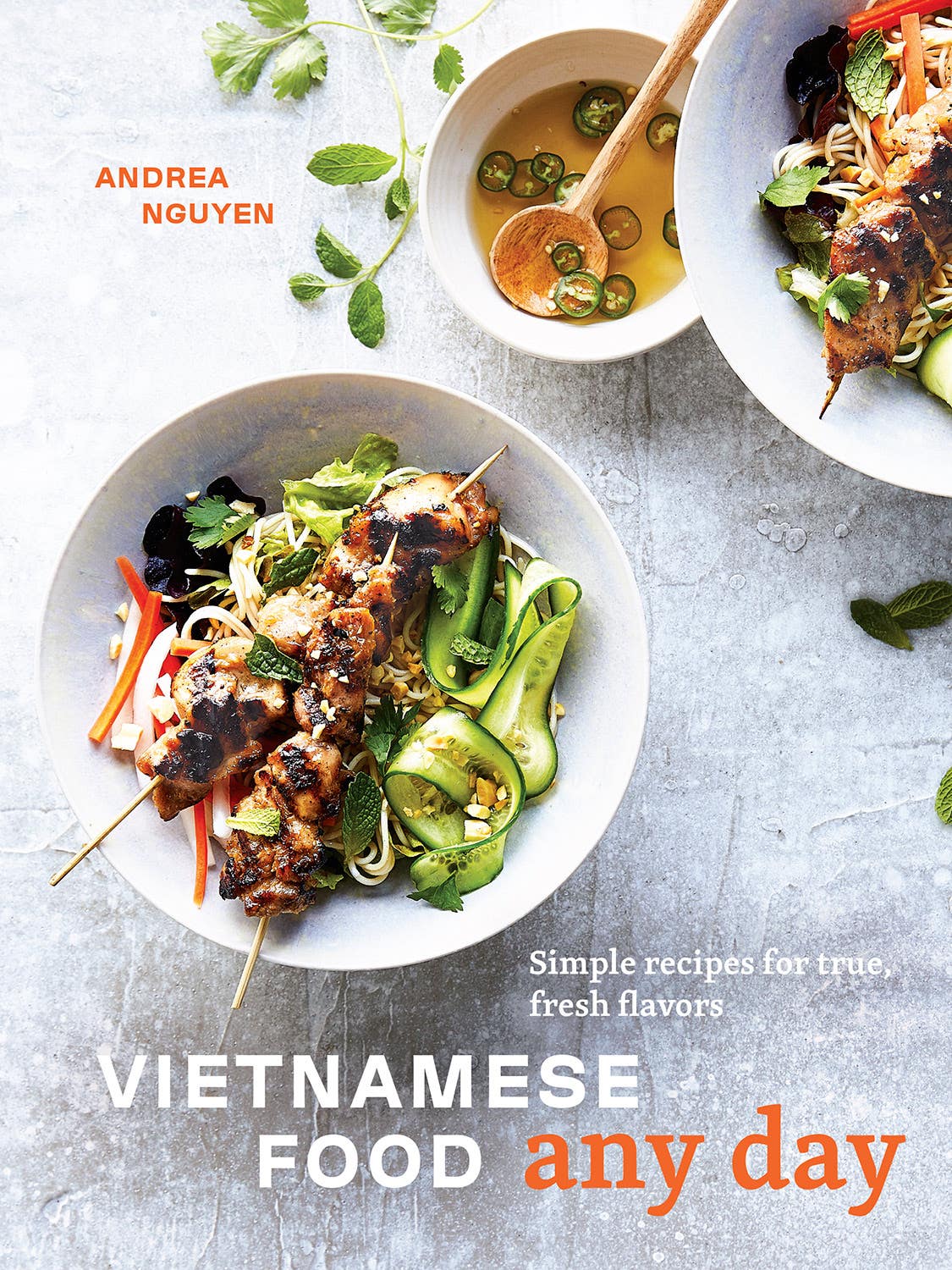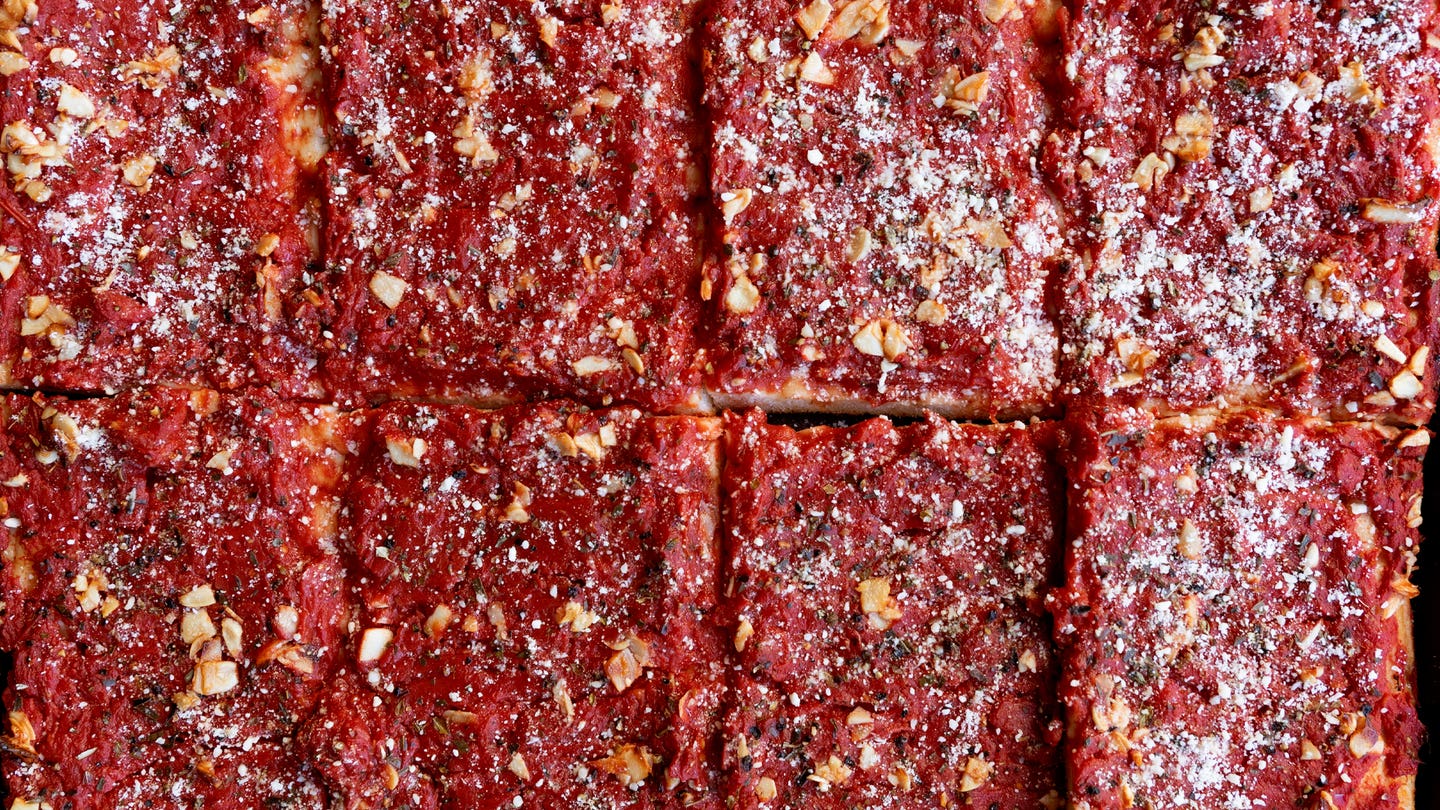Andrea Nguyen’s Latest Cookbook Is a Seminal Work for Vietnamese Cuisine
Supermarkets, microwaves, and Instant Pots, oh my! The O.G. Vietnamese cooking authority on why the cuisine is more accessible than ever
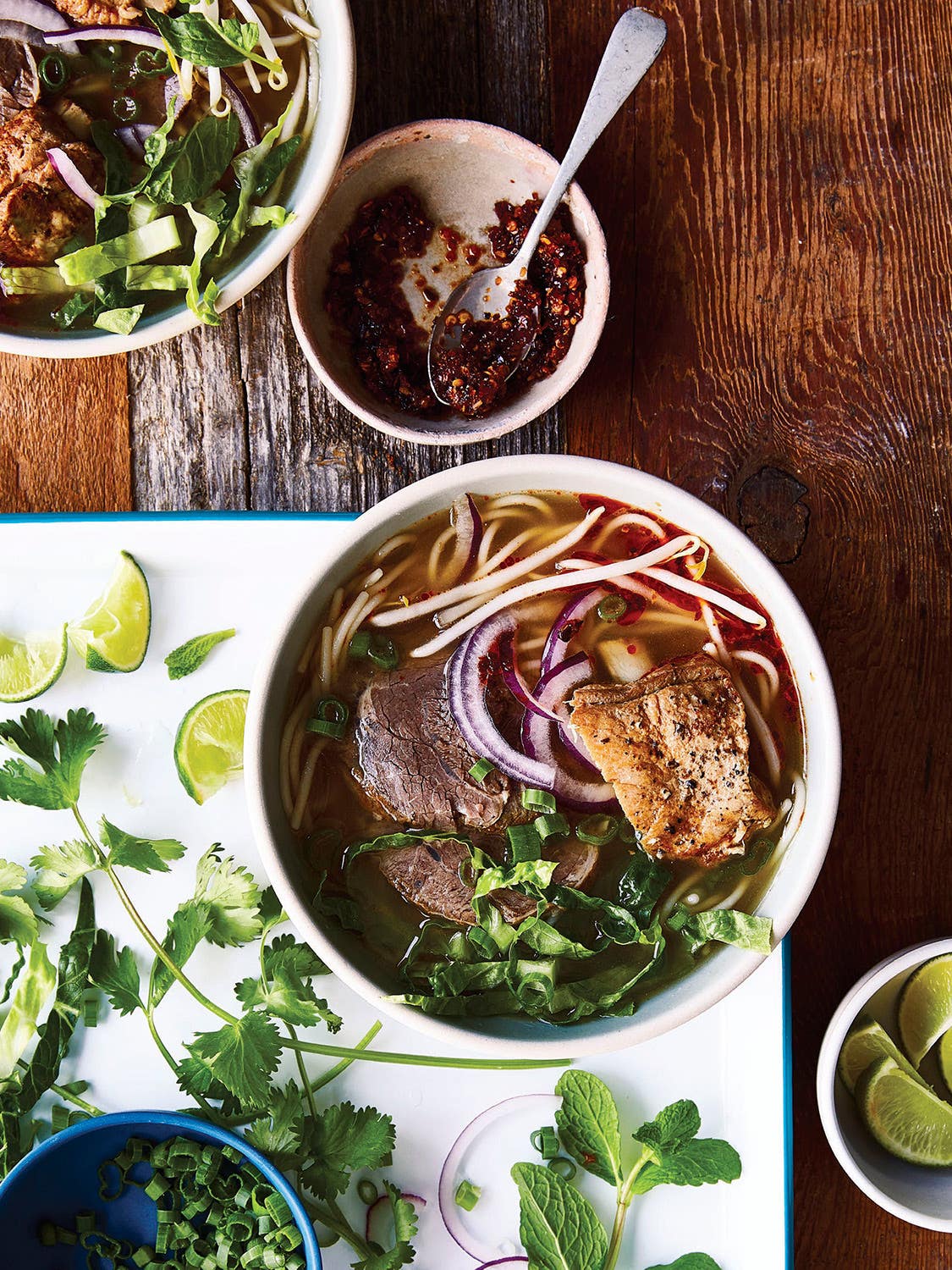
"I don't want to cook like my mother used to, because she doesn't even cook that way anymore," says cookbook author Andrea Nguyen. "We all have an idea of what tradition looks like, but with this book, I wanted to liberate the home cook in America." She adds, "It's okay to use lemongrass paste from a tube instead of chopping your own—it doesn't make you a bad person." In her sixth and latest book, Vietnamese Food Any Day, Nguyen hammers home what is (but shouldn't necessarily be) a bold statement: that anyone can make Vietnamese food any day, anywhere. She contextualizes this argument in the experience of newly arrived Vietnamese refugees, like her own family, during the 1970s. The book's preface, entitled "Seeds of My Supermarket Obsession," spotlights just how Vietnamese it is to use foreign ingredients and cooking techniques while staying true to the integrity of traditional flavors.
"Like many good cooks, my mom adapted her cooking for her current situation," Nguyen writes, citing her mother's use of Japanese rice flour milled in California for dumplings and Swans Down cake flour for bánh cuốn rice rolls. "From the get-go, my parents wanted our family to assimilate into American society and they were clear in their approach—master English for everyday life; but at home, speak and eat mostly Vietnamese. Spaghetti dinners included a side of rice."
But much has changed since the 1970s: fish sauce, Vietnam's fermented mother sauce of anchovy and salt, is now often available on supermarket shelves. The ever-popular pressure cooker cuts down the cooking time of pho broth from 13 hours to two. And new innovations in Vietnamese cuisine, both in Vietnam and stateside, have come to include oddball additions like Laughing Cow cheese and elbow macaroni.
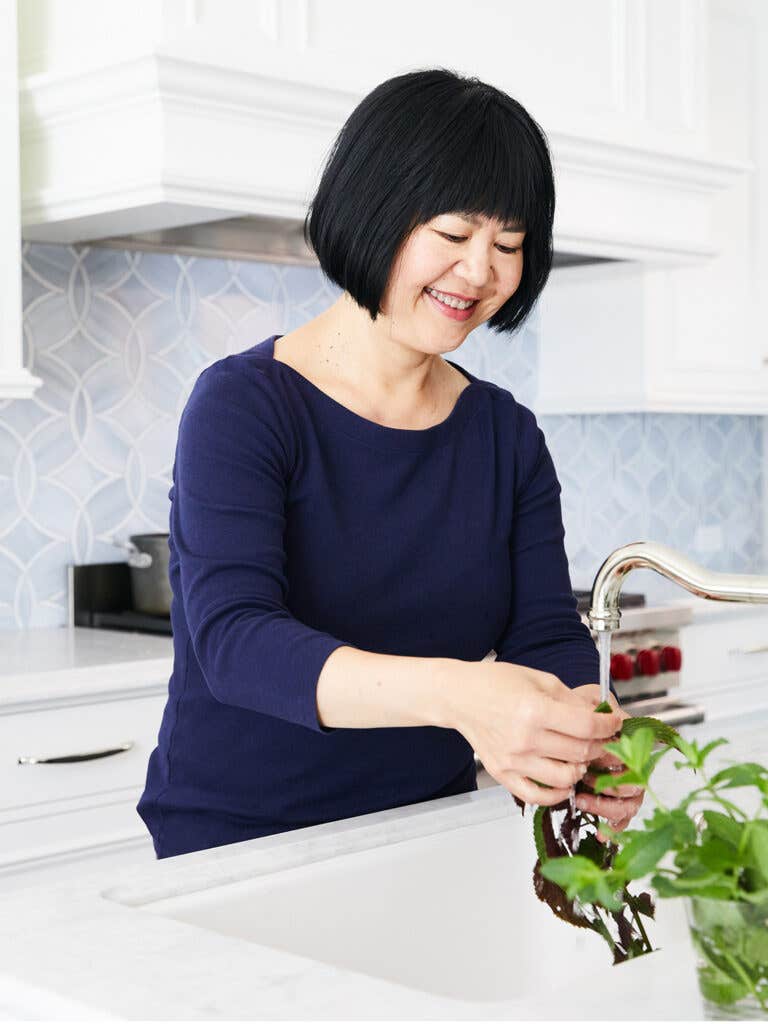
Nguyen is not precious about authenticity—after all, what could be more authentically Vietnamese than learning to work with the tools that are readily available? That make-do attitude is what Nguyen says legitimizes a culinary experience. “Why does Vietnamese cooking need to be stuck in some kind of old tradition? Do I have to wear a conical hat to make good Vietnamese food?” she laughs. “I do yoga, but I can’t sit in that squatting position to prep food on the floor.”
And with Vietnamese Food Any Day, Nguyen not only gives her stamp of approval for taking shortcuts with Vietnamese food, but she also lays down years worth of wisdom, tips and tricks, and technical know-how. Here, we chat with the author about authenticity, microwaves, and the changing face of Vietnamese-American food.
You're the pioneer of making Vietnamese food "accessible" for Western audiences. What did you find to be the most challenging part of writing a Vietnamese cookbook for the everyday home cook?
Andrea Nguyen: This is my sixth cookbook, and a lot of people assume that I'm a hardass and that I want people to make dumpling wrappers or banh mi rolls from scratch. But I really try to offer people a lot of different doors they can go through to make the food, because there are already so many challenges. People think it's so hard, or that it has to be a special-occasion project. There's this notion that you can't make it unless you have the right ingredients, but the truth of the matter is that you just need more of an understanding of the foundations. And really, there's no better time to be making Vietnamese food in America because the ingredients are so available.
Things have certainly changed since the '70s, or even since your first cookbook, Into the Vietnamese Kitchen, came out in 2006.
It sounds ridiculous now, but when my family came here in 1975, nước mắm (fish sauce) was not on supermarket shelves. Now you have so many options. If you're a good supermarket shopper, you don't even have to go to an Asian market to get the ingredients for Vietnamese food. When I started writing this book, I realized a lot of the books out there had really long ingredient lists, but they didn't reflect how my family ate. Refugees and immigrants made do until we could go to an Asian market. That notion of finding workarounds and creating food rooted in foundations is what makes this book modern Vietnamese-American.
So it's more about giving people the basics and letting them experiment and tweak from there?
There are all these little lessons in the book that allow people to have flexibility and versatility. So then you're like, "I can do this; I can be a better cook and make Vietnamese food whenever I want." I told myself that if I wanted more people to make Vietnamese food, I needed to really break things down. There are tons of recipes that say they are Vietnamese or Vietnamese-inspired but don't give people the roots or reasons for their tweaks. My job, because I am supposedly the noted authority, is to give readers that foundation so they understand the thread of Viet food and how I'm helping them evolve it.
I see you use pressure cookers, and even—gasp—a microwave oven. Can you talk a little about how new technology is changing the way you cook traditional food?
Back when I wrote my first cookbook Into the Vietnamese Kitchen, no one was really talking about pressure cookers as a mainstream thing. Now I own three of them myself, and my pho cookbook included pressure-cooker pho recipes. I was really just testing the waters with that recipe, but when people responded so well, I was like, "Alright I am unleashing the waters!" It makes sense and saves time. We all want to save time.
Pressure cookers are now even available in Vietnam. I am always checking what is available in Vietnam, and what people are using to make Vietnamese food that is doable for busy modern lives. So I also used the microwave. There's this thing in cookbook writing where we are not supposed to talk about the microwave. But goddamnit, my family has this recipe, the steamed egg pot, where you steam it in the microwave, and it's really great. When I talked to my editors about it and asked if I could nuke something in the microwave for eight minutes, they said, “No don't, I wouldn't do it.” But some people cook whole meals in the microwave!
Priya Krishna is doing the same thing with her book, Indian-ish. She's got the microwave too. We're pulling back the curtain and saying, "This is how people cook." We are not squatting on the floor and pounding on things all the time—this is how modern Vietnamese people are eating, cooking, and thinking.
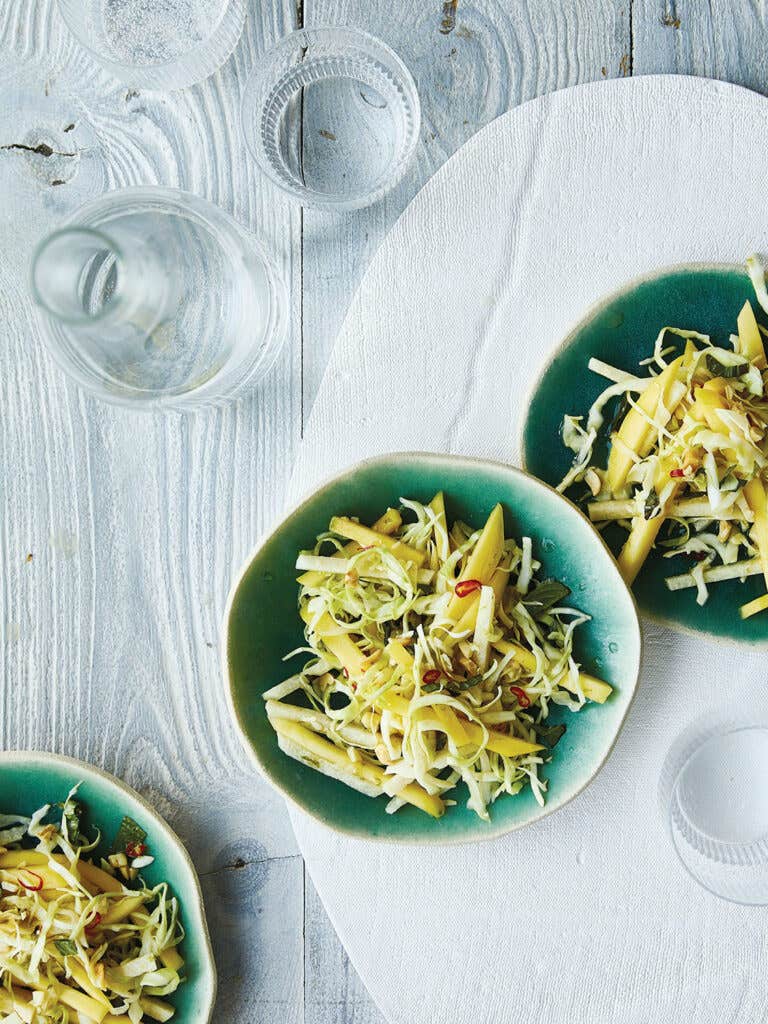
So you don't need to buy any special equipment to make Vietnamese food?!
Well, there were tools I left out of the book on purpose, like the Chinese steamer. It's a fabulous traditional tool, but Americans don't own them. So a lot of the dishes that are traditionally steamed are baked in the book, in a water bath in the case of the trứng hấp (steamed eggs) and the flan. I was practically asking for permission from my mom to oven-steam the flan, which is ridiculous since I am a grown woman. She said, "Oh honey, you know all of my lady friends have been doing that for years!"
Vietnamese cuisine isn't fixed, and I think we need to liberate ourselves to an extent. I would do myself and all cooks a disservice if I had the old-way-or-no-way approach. There is no reason for Viet food to be ghettoized as some precious thing because once we do that, we will never be a part of the American table.
I feel the same way when I am asked to write something precious about Vietnamese food, or go out in search of some auntie or street vendor somewhere making a special dish. Not that those stories aren't interesting, they just feel unrealistic. Why do you think we're so often pigeonholed into that image?
It's romanticism. People who have traveled in Vietnam often think of street food. I respect street-food cooks because they are mastering and selling one dish their entire career. But to expect you to get that recipe and turn around and replicate it? What people need to understand is that the mise en place for that kind of food is horrendous! That's why vendors only make and sell one dish. There is a certain level of discounting what it takes to master that food.
When my parents and your parents lived in Vietnam, you went out for certain things. You just did not make them. People take a tour of Vietnam and see locals make bánh tráng (rice paper) and then they come back to America and email me asking how to make it from scratch. I tell them they can't, because we buy it either from factories or from people who've labored their whole lives as second- or third-generation bánh tráng-makers. That's a specialty field, and you want to respect that.
Let's talk about MSG.
I have come out to people and said, "It's not that bad. If you want to use it, go ahead and use it." In this book, for example, I suggest MSG for the the garlic noodle recipe. It just sends it over the top. I worded it really carefully with my editor because the haters could come out, and I offered all these non-MSG options as well. But I don't believe there are negative health effects. The deeply-flawed study that most people cite is the one about mice injected with MSG. First off, we don't inject MSG into our veins; we eat it, so it enters our veins differently. Also, if you're a little mouse and you got the quantity that a horse was supposed to eat, then sure, I think that would make you feel bad.
With all the talk about authenticity and ownership of cuisine today, how do you see yourself as an intermediary between Vietnamese folks and non-Vietnamese folks who want to make Vietnamese food?
Non-Vietnamese people have been making Vietnamese food for a long time. Being Vietnamese does not mean you can make Vietnamese food well. My sister, for example, is a wonderful attorney but a terrible cook.
Your DNA is not required. But you do need to know where things come from. In my work, I put a lot of effort into explaining culture, cuisine, and history so that people get it, respect it, and appreciate it. So when they go make a dish themselves or they watch someone make a Shanghai soup dumpling or put together a bowl of pho, they're aware of the time that goes into it and understand that it's complicated cooking. Your skin color or DNA or who you are married to doesn't really matter if you have a foundation and pay respects to the people who seeded that knowledge. The problem is when that respect and that level of curiosity don't exist. That's where this appropriation stuff goes awry.
And that leads me to the non-traditional recipes you have in the book, like the spicy clam and herb scoops. I love that it's a take on cơm hến (rice and freshwater clam), which is so difficult to replicate in the U.S. Can you talk about your inspiration for that dish?
Since hến is very hard to find here, Vietnamese people use canned clams—you just go to Costco and buy it! I add a little lemongrass, garlic, and chile to give the clams that boost of flavor. And adding the mushroom brought me closer to the texture and flavor of the original hến. My other trick is the crackers. When my family came to the U.S., rice crackers were not available, so we used tortilla chips through the '70s and '80s, which I call out in the ingredient list. The gluten-free crackers from Trader Joe's are also a good replacement for traditional rice or sesame crackers. These are the strange things I sit around at home thinking about.
Vietnamese food is an exciting moving target. When people say, "Well, what makes that dish Vietnamese?", it's all of these flavors put together in a refreshing manner.
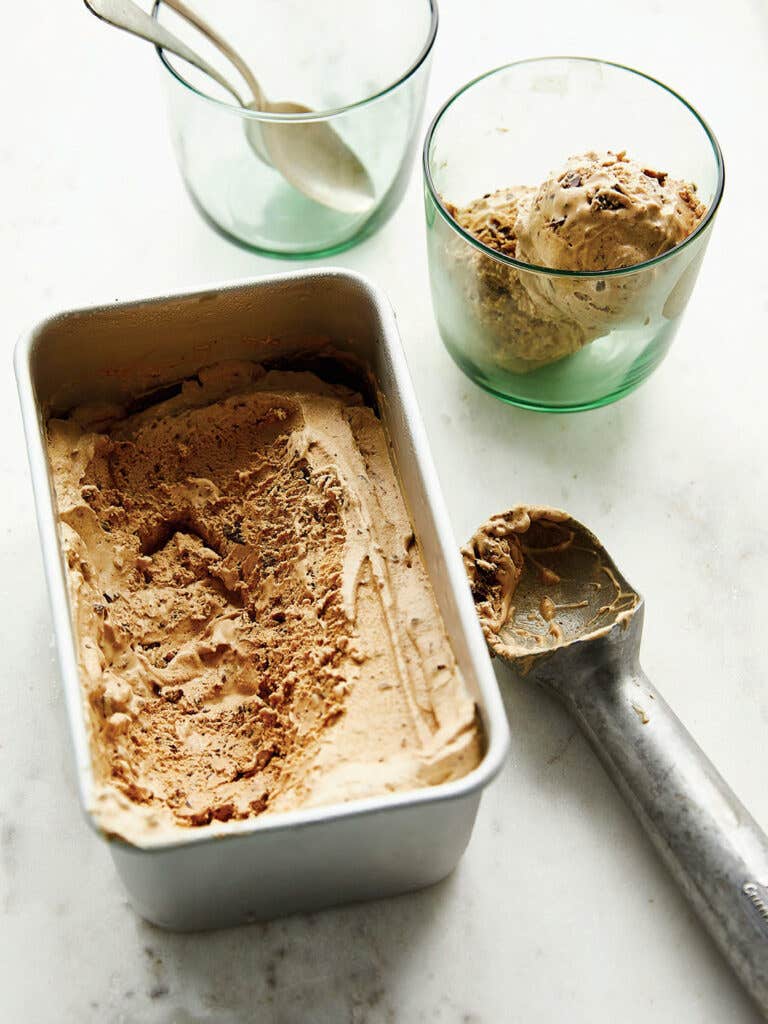
Can you share a few of your favorite recipes from the book?
The no-churn coffee ice cream is so easy—you just need a hand mixer. A long time ago, in Saigon, there used to be this ice cream parlor in District 1 with all these flavors of ice cream. It's gone now, but I used to walk past it and think if you're a Vietnamese person, you don't have an ice-cream maker or a freezer. Well, now people do have refrigerators, but still no ice-cream makers. I have seen hand mixers in Vietnam, which means they can make this recipe.
The bánh xèo (Vietnamese crêpe) recipe took me forever to figure out, so that was a triumph. The turmeric and coconut rice is so simple, but it's another one I've been chasing for decades. The recipe would not have been possible if coconut water had not come on the scene—that was the whole secret. I'm not hydrating with it, I'm cooking with it! But it's just this confluence of changing tastes in the American diet that finally made the recipe a reality.
This interview has been edited and condensed for clarity.
Keep Reading
Continue to Next Story
